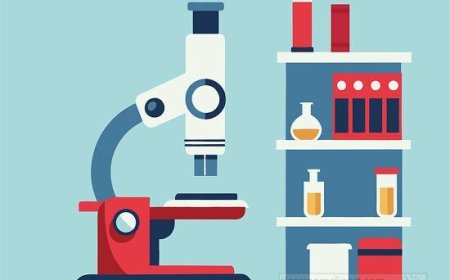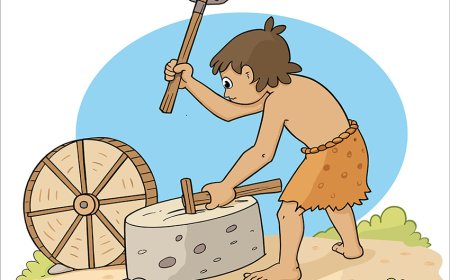Inventions that shaped our world
Inventions: Shaping the World Through Innovation
What Is an Invention?
An invention is a new device, method, or process that has been created to solve a problem, make life easier, or improve how we do things. Inventions can be big or small, simple or complex. They often start with an idea-something that doesn't exist yet but could be useful or exciting if it did. Some inventions are completely new, while others are improvements or combinations of earlier ideas. From the wheel to the smartphone, inventions have helped humans survive, grow, and connect in countless ways.
Why People Invent
People invent things for many reasons. Sometimes it's to meet a need, such as creating tools for farming or medicine. Other times, inventions are inspired by curiosity or creativity. Inventors often look for ways to save time, reduce effort, solve a problem, or make something more enjoyable. In history, many inventions came out of necessity-like when early humans needed weapons to hunt, or machines to build homes. Today, inventions also come from scientific research, business competition, or personal dreams.
Types of Inventions
Inventions can be grouped into different types depending on what they do or how they are used. Mechanical inventions are machines with moving parts, such as bicycles or engines. Electronic inventions include items like radios, televisions, and computers. Medical inventions help doctors and patients, like X-ray machines, vaccines, and prosthetic limbs. There are also chemical inventions like synthetic fabrics and cleaning agents, and digital inventions such as apps, software, and online platforms.
Some inventions are tangible products, while others are methods or systems, such as assembly lines or traffic lights. Many modern inventions combine technologies from different fields-for example, smartphones use touchscreens, cameras, software, and wireless communication all in one device.
Famous Inventions That Changed the World
Throughout history, certain inventions have made a massive impact on human civilization. The wheel, one of the earliest known inventions, made transportation and machinery possible. The printing press, invented by Johannes Gutenberg in the 15th century, helped spread knowledge quickly by making books cheaper and easier to produce. The light bulb, developed by Thomas Edison and others, brought electricity into homes and businesses. The telephone, invented by Alexander Graham Bell, allowed people to talk over long distances.
The airplane, created by the Wright brothers, changed travel and global communication forever. In the 20th century, inventions like the computer, internet, and smartphone transformed how we live, work, and interact. Other important inventions include the microscope, vaccine, electric motor, and refrigerator-each of which has improved daily life in major ways.
How Inventions Are Created
The process of inventing is called innovation, and it usually begins with identifying a problem or imagining a better way to do something. Inventors often experiment, build prototypes (early versions), and test their ideas to see what works. Many inventions are the result of trial and error, where failures lead to learning and improvement.
Some inventors work alone, while others work in teams or as part of companies or research institutions. Engineers, scientists, and inventors may spend years developing a single invention. In many cases, a successful invention is followed by a patent, which is a legal document that protects the inventor's idea from being copied without permission.
Modern Invention and Technology
Today, invention continues at a rapid pace, especially in areas like robotics, biotechnology, artificial intelligence, and renewable energy. New inventions are constantly changing how we communicate, treat diseases, grow food, and travel. Devices like 3D printers and self-driving cars were once science fiction, but now they are part of the real world.
Digital tools like apps, web platforms, and online services are also inventions. Many of them allow people to work, learn, and play in ways that were impossible a few decades ago. Inventors today use powerful computers, global collaboration, and access to vast online knowledge to bring their ideas to life faster than ever before.
Inventions from Different Cultures
Inventions have come from all over the world, and every culture has contributed to human progress. Ancient Chinese inventors created paper, gunpowder, the compass, and printing long before these things were known in Europe. Arab inventors made major contributions in mathematics, astronomy, and medicine. In India, ancient scholars developed advanced surgical tools and methods, while African inventors built water systems, iron tools, and agricultural methods that shaped early civilizations.
Inventions are not just products of the modern Western world-they are a global human achievement that reflects the diversity of human needs, ideas, and imagination.
The Importance of Patents and Intellectual Property
When someone invents something new, they can apply for a patent-a special license that gives them the right to control how their invention is used. Patents are part of intellectual property, which protects ideas, designs, and creations. This system encourages innovation by rewarding inventors and giving them time to profit from their work.
However, patents also bring challenges. Some inventions build on old ideas, raising questions about who owns what. In some cases, companies fight over patent rights, which can slow down innovation. Still, intellectual property laws are a key part of the modern invention process.
Invention in Everyday Life
Many things we use daily were once new inventions: zippers, toothpaste, alarm clocks, microwaves, and batteries. Even small inventions can make life easier, like the paperclip, post-it note, or reusable water bottle. New inventions continue to appear in homes, schools, and workplaces all the time. Even ideas like online shopping, electric scooters, and streaming video are results of recent inventions that have become part of everyday life.
Invention isn't just for scientists and engineers. Artists, designers, and regular people often create new things that solve problems in creative ways. In fact, many inventions come from people who simply see something that could be improved and decide to try something new.
Encouraging Future Inventors
Young people can become inventors too! Many famous inventors started with simple projects and curiosity. Schools, science fairs, and invention competitions encourage students to explore their ideas and solve real-world problems. With access to tools like coding platforms, DIY kits, and 3D printers, it's easier than ever for students to invent.
Being an inventor means being creative, patient, and willing to learn from failure. Anyone can invent something new by observing the world, asking questions, and trying out their ideas. Whether it's building a better backpack or designing a new app, invention is about making life better.
Interesting Facts About Inventions
-
The first wheel was invented over 5,000 years ago in Mesopotamia.
-
Leonardo da Vinci sketched designs for inventions like helicopters and submarines long before they could be built.
-
The first telephone call happened in 1876 when Alexander Graham Bell said, "Mr. Watson, come here, I want to see you."
-
The light bulb had many inventors-Thomas Edison just made the most practical one.
-
The Internet was invented in the late 20th century to help scientists share information.
-
Velcro was inspired by burrs that stuck to a Swiss engineer's dog.
-
The microwave oven was discovered by accident when a scientist noticed a chocolate bar melted near radar equipment.
-
The first computer filled a whole room and weighed over 30 tons!
-
The airplane was invented in 1903 by Orville and Wilbur Wright.
-
The smartphone combines dozens of inventions, including the phone, GPS, camera, and computer.



















































